Effects of manganese deficiency in horses with stomach problems
3 min. read time
Audio version – listen to this article easily
Stomach ulcers are one of the most common health problems in horses – and often go undetected for too long. Early signs can be subtle: changes in eating behavior, loss of performance, increased irritability, or pain when saddling. This article lists over 20 typical symptoms of gastric ulcers in horses – from visible signs like poor coat condition or weight loss to less obvious behaviors like yawning, tail swishing while eating, or flehmen. Learn how to recognize early warning signs and when to call your vet.
EGUS is a widespread problem in the equine industry, affecting horses of all ages and breeds. According to recent studies, the prevalence of EGUS in horses is estimated to be between 50 and 90%. Performance horses, such as Thoroughbred race horses, are at a higher risk of developing EGUS due to the intense exercise and stress associated with their training and competition. However, EGUS can also affect pleasure horses and foals, highlighting the need for awareness and prevention strategies among horse owners.
The high prevalence of EGUS in horses is attributed to various risk factors, including high grain diets, stall confinement, transport stress, and intensive exercise. Want to know more about causes, treatments, and prevention? [Read more]
The symptoms can be subtle and varied.
There isn’t a single cause behind gastric ulcers in horses—instead, a range of factors can contribute, either individually or in combination. Likewise, the symptoms don’t follow a one-size-fits-all pattern.
Every horse shows symptoms differently.
The signs of gastric ulcers can vary greatly from horse to horse. Some horses show obvious discomfort, while others may only display subtle changes in behavior or performance. That’s why there’s no universal symptom profile.
A clear diagnosis requires gastroscopy.
Because the symptoms often appear gradually, they can easily go unnoticed at first. Many cases are only identified once the ulcers are already advanced. A definitive diagnosis can only be made through gastroscopy.
Early detection matters.
The earlier you recognize the signs, the sooner you can take action. To help with that, we’ve compiled a list of the 24 most common symptoms below.
What are the most common signs of stomach ulcers in horses?
Look for colic episodes, persistent pain during saddling, elevated pulse (>44 BPM), slight fever (>38.2°C), weight loss, and performance drop
What behavioral signs indicate a stomach ulcer in horses?
Tail swishing during feeding, aggressive or withdrawn behavior, increased yawning, flehmen, cribbing, or licking objects are just some of those changes
How do stomach ulcer symptoms in foals differ from adult horses?
Foals may show dorsal recumbency (lying on their back), diarrhea, potbelly, poor coat development, and colic-like behavior – even without feed blockage.
When do stomach ulcer symptoms in horses require a vet?
If your horse shows recurring colic, fever, rapid pulse, severe reluctance to move downhill, or acute behavioral changes, seek veterinary attention promptly
To make things easier, we’ve grouped the symptoms into categories. Simply click on any symptom to learn more about it.
Horses with stomach issues often show a reduced appetite, and this usually develops gradually.
A horse that once eagerly ate may start to hesitate at mealtime, push its feed around with its nose, or leave portions uneaten—including roughage.
Anyone who’s experienced a stomach ulcer can relate—when the stomach is irritated, eating becomes uncomfortable. During digestion, the stomach contracts, and if ulcers are present, this can cause pain—especially in areas where the stomach lining is damaged. When gastric acid touches these inflamed spots, it creates a burning, unpleasant sensation that naturally discourages the horse from eating.
.jpeg?width=4288&name=AdobeStock_105470563%20(2).jpeg)
Idle chewing is often seen as a sign of submission—but in some cases, it may also indicate stomach discomfort.
In this context, the horse moves its mouth or mimics chewing without having any food in its mouth. Unlike the brief, subtle chewing associated with submissive behavior, this version often involves repeated, deliberate grinding of the lower jaw, as if the horse were chewing on something.
This behavior can be a subtle but telling sign of gastric irritation.
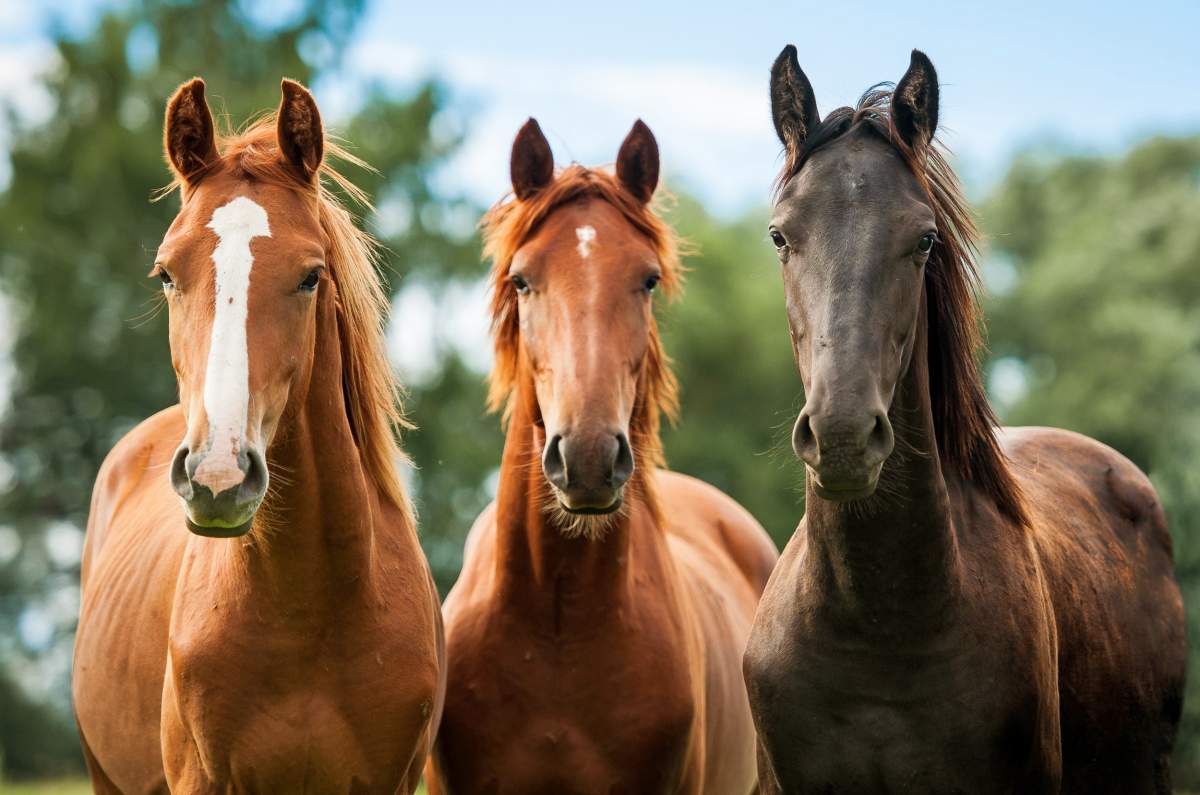
Tail swishing during feed consumption is very atypical for healthy horses and a clear sign of gastric ulcers.
Severe ulcers can cause significant pain and discomfort, leading to noticeable changes in the horse's behavior, such as tail swishing. The horse experiences pain through the consumption of food and its subsequent digestion and responds by swishing its tail.
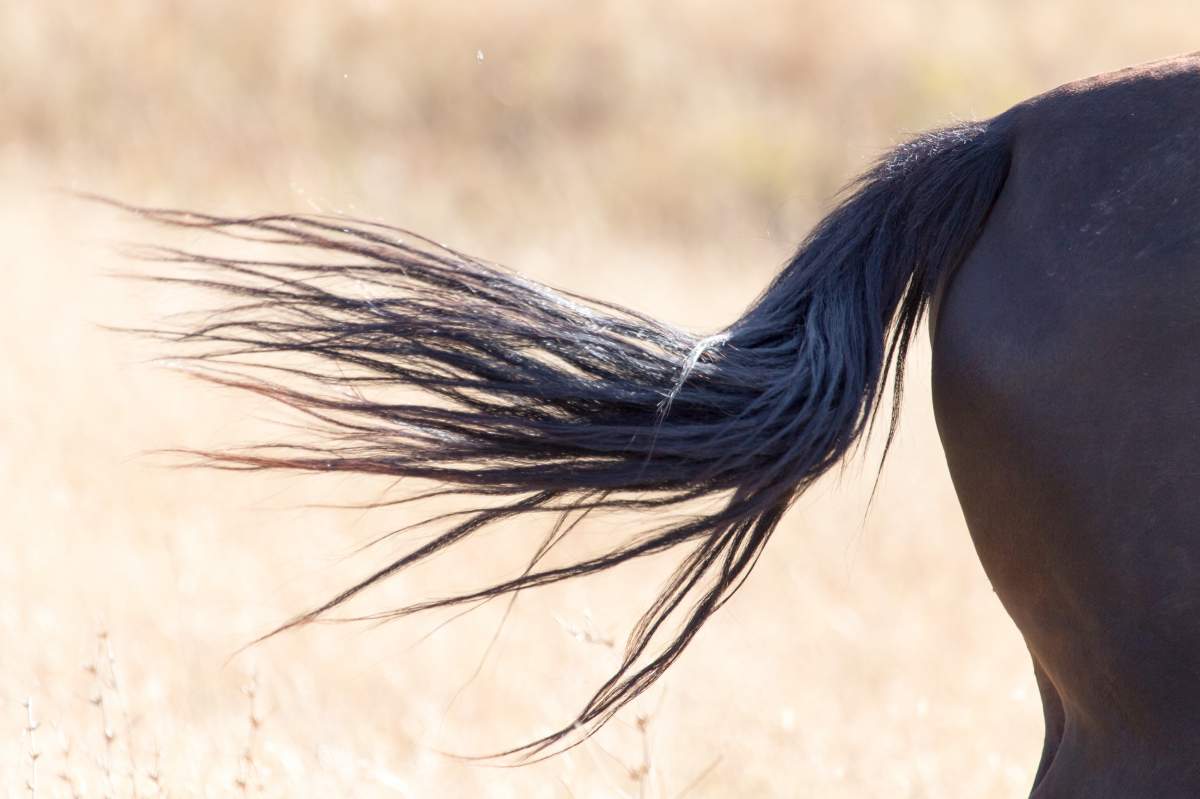
It’s not possible to say whether all horses with stomach ulcers will drink more or less water—hydration patterns can vary significantly from horse to horse. Some may drink noticeably more, while others may drink much less.
Because most horses have constant, unsupervised access to water, changes in consumption often go unnoticed. Unless you have a smart automatic waterer with built-in sensors to track intake, monitoring water consumption can be tricky.
One alternative is to offer water in buckets and measure intake manually—but this can be labor-intensive. A 600 kg horse typically drinks 30 to 60 liters per day, depending on factors like workload, weather, and housing conditions. And of course, the water must be clean at all times.
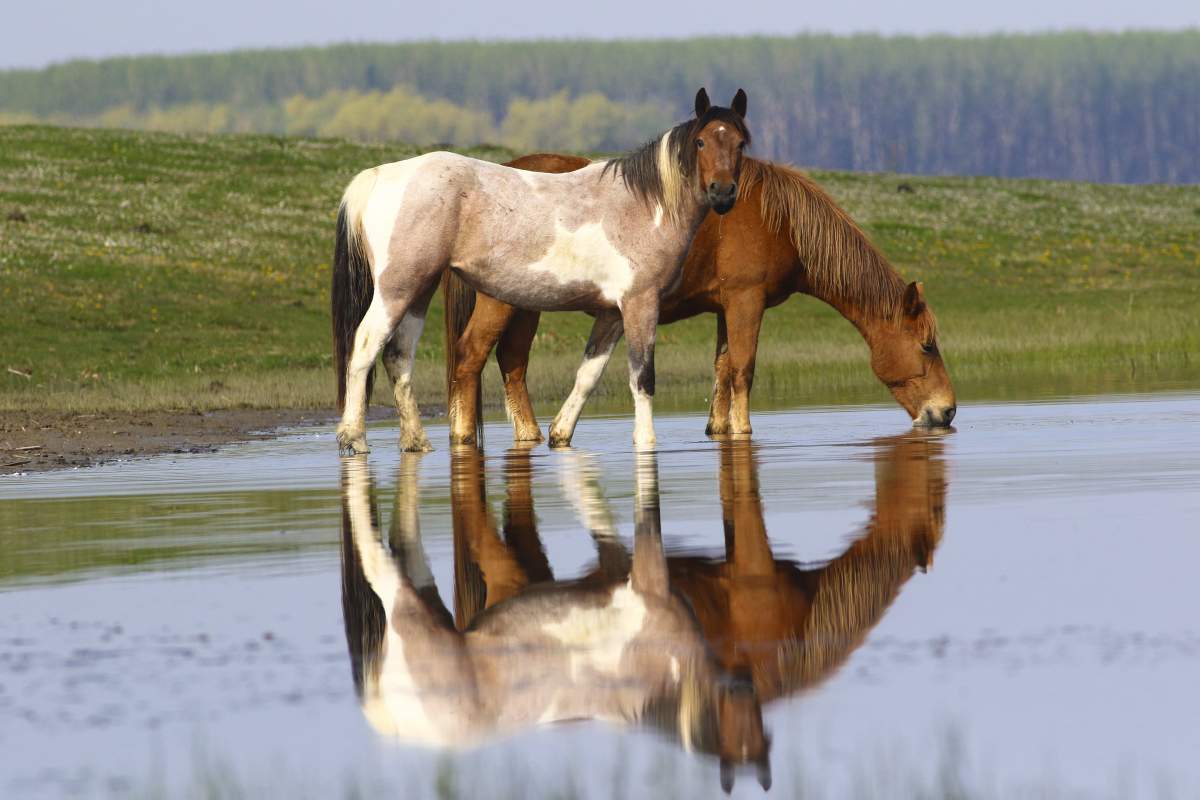
Lying down can be uncomfortable for horses with gastric ulcers. The act of lowering themselves to the ground compresses the stomach, which may trigger pain.
You might notice your horse hesitating before lying down—pausing, shifting, or making several attempts before either finally settling or deciding to remain standing. This behavior can be a subtle sign of gastric discomfort, often accompanied by other symptoms such as abdominal pain and changes in eating habits.
Interestingly, once a horse with ulcers does lie down, it may stay down longer than usual. Horses experiencing stomach issues tend to rest more and eat less, which only worsens the condition: the stomach continues to produce acid even when empty, and without regular chewing and saliva production to buffer it, the acid can further damage the unprotected stomach lining.
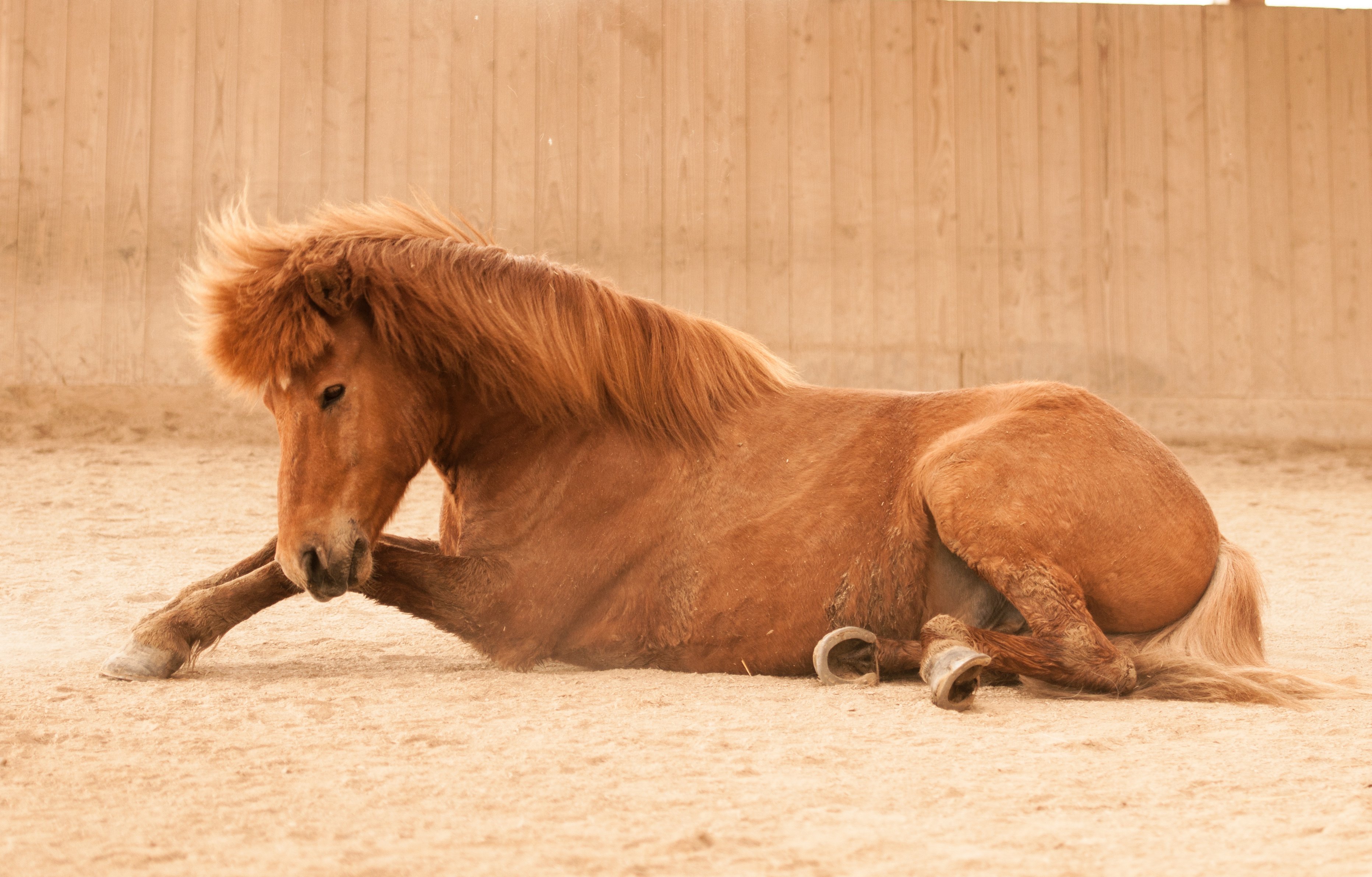
Some horses stand with their front and hind legs positioned unusually far apart in an attempt to relieve pressure on the stomach and intestines.
This stance should not be confused with the classic laminitis posture, where a horse shifts its weight backward to take pressure off the painful front hooves.
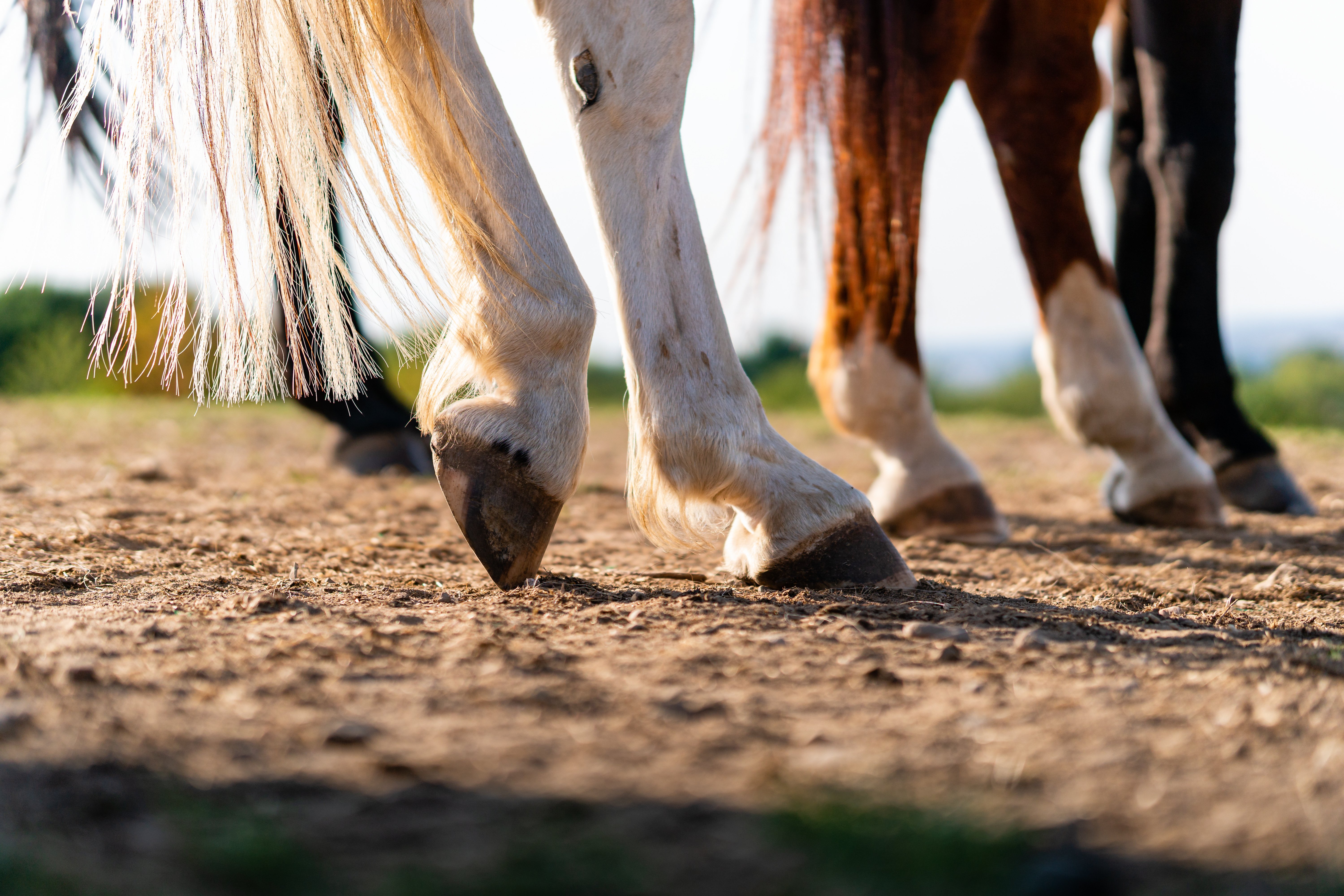
Horses with stomach ulcers often show defensive or aggressive behavior during saddling—especially when the girth is tightened or even when the saddle is first placed on the back.
The girth sits close to the stomach area. When it’s tightened, it pulls the belly—and the stomach—upward. This movement can cause stomach acid to splash onto the sensitive, unprotected areas of the stomach lining, leading to intense pain if ulcers are present.
Typical reactions include tail swishing, kicking at the girth, biting, or snapping at the person saddling them—all classic signs that the horse may be experiencing gastric discomfort.
.jpeg?width=3888&name=AdobeStock_291462786%20(1).jpeg)
Gastric ulcers can lead to noticeable changes in a horse’s personality. The most easygoing, tolerant horse may suddenly become irritable or aggressive—disrupting herd dynamics. Conversely, a once social, friendly horse might withdraw, preferring to isolate itself from others in the paddock.
As you'll see in points 10 and 11, these behavioral changes can range widely—from introversion to outright aggression.
This is where your insight as the horse's owner or caregiver becomes essential. A deep understanding of your horse’s usual temperament and social behavior helps you spot when something is truly off—whether it’s a health issue, a bad mood, or something else entirely.
To help you track these changes over time, we’ve created the Equine74 Stomach Diary—a free and easy-to-use tool that helps you document symptoms, feeding routines, and behavioral shifts. It can be an invaluable resource for identifying patterns and sharing detailed insights with your vet.
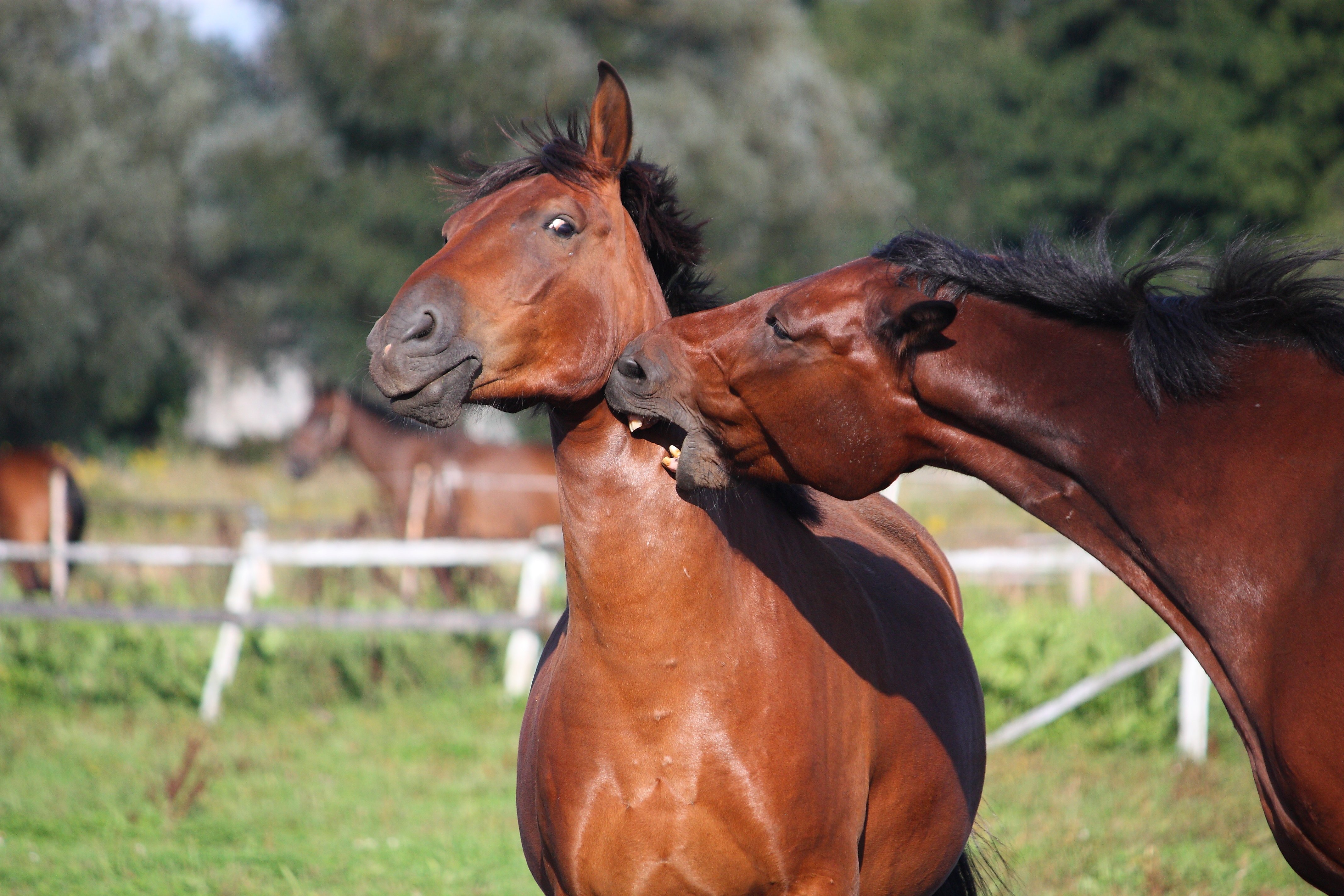
Cribbing and gastric ulcers often go hand in hand—but it’s not always clear which comes first. Cribbing may be both a cause and a symptom of gastric discomfort.
Horses prone to cribbing often increase the behavior when ulcers are present. In some cases, cribbing even begins with the onset of stomach ulcers. It’s believed that the horse is trying to stimulate saliva production, which can help buffer stomach acid and temporarily ease the pain.
Typical cribbing involves the horse placing its incisors on a fixed object, arching its neck, and swallowing air. This contraction of the lower neck muscles opens the pharynx and produces the distinctive cribbing sound.
There are also horses that exhibit a form of cribbing without using an object—they hold their heads freely and mimic the same behavior, though this is less common.
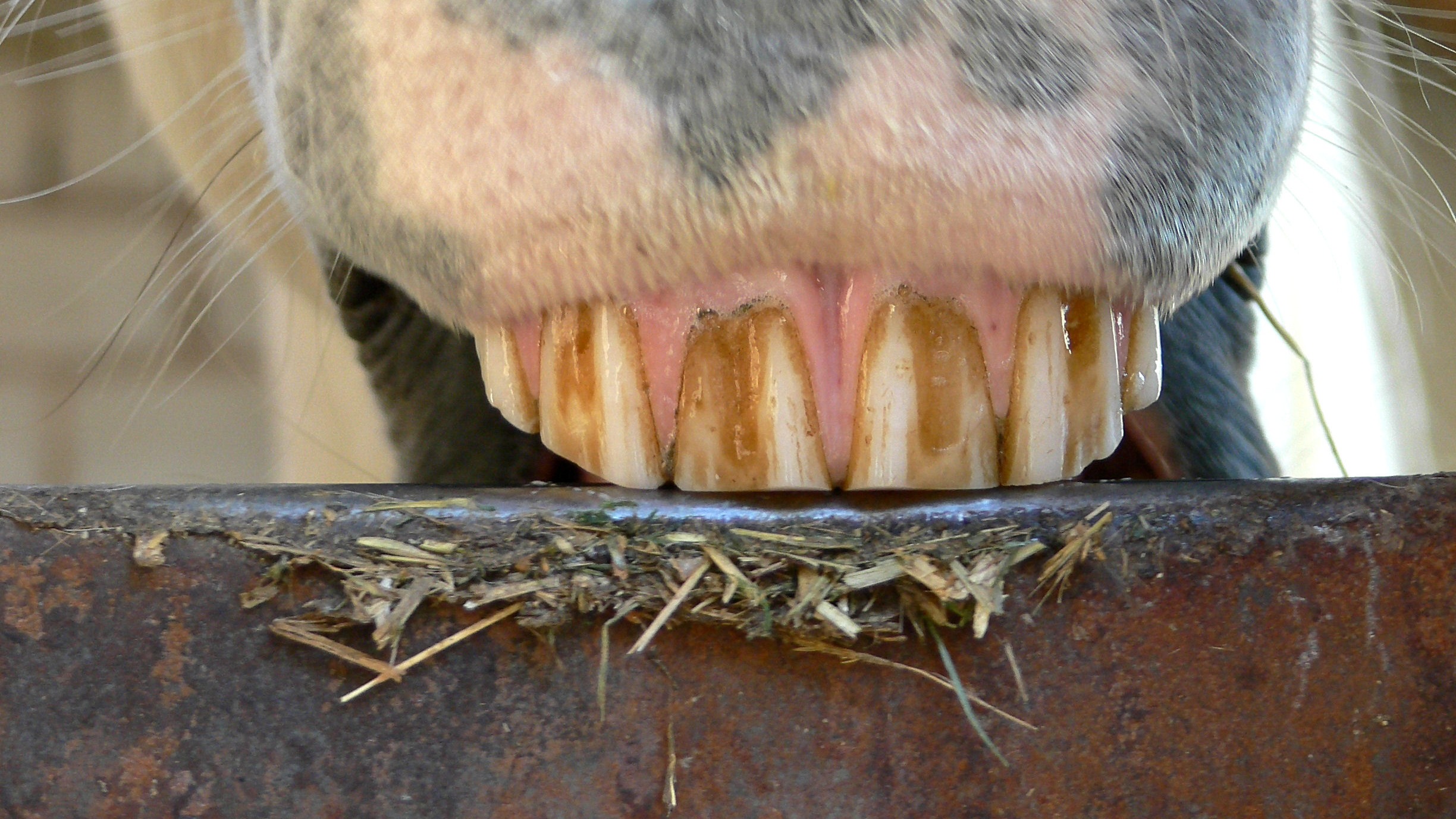
The Flehmen response is when a horse stretches its neck forward and curls its upper lip, often holding this position for a few seconds. Typically, horses do this to better analyze a scent—such as another horse’s pheromones or an unusual smell in their environment.
However, Flehmen behavior can also be a sign of pain or discomfort. Horses suffering from gastric ulcers or colic often display this response, not because of a scent, but as a reaction to internal discomfort, particularly in the abdominal area.
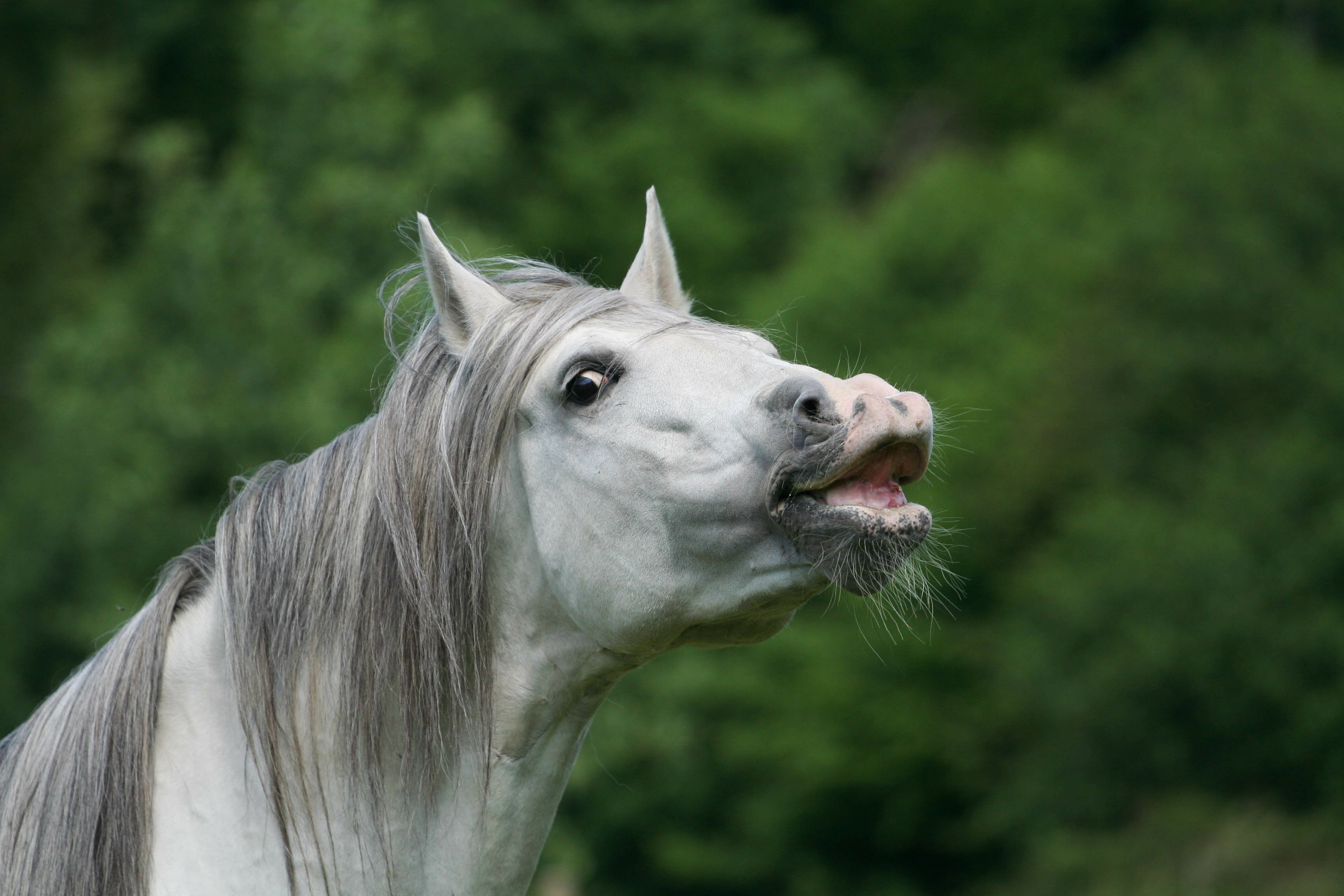
If your horse is yawning frequently—whether in the stable, out in the field, during grooming, or even under saddle—it could be a sign of gastrointestinal discomfort, including gastric ulcers.
While yawning is a natural way for horses to relieve tension and reduce stress, persistent or exaggerated yawning may indicate something more serious. And if there’s one thing an ulcer patient often has too much of, it’s stress—both as a potential cause and a consequence of ongoing pain.
Interestingly, some horses continue to yawn occasionally even after successful ulcer treatment. This may be a lingering stress response or simply a habit formed during the discomfort phase.
Of course, stress is a cause, not a symptom—but in the case of stomach ulcers, it can feel like a Sword of Damocles hanging over your horse’s well-being.
To learn more about how stress affects your horse and what you can do to minimize it, we recommend reading our article on equine stress and prevention strategies.
Careful observation is key when it comes to recognizing early signs of gastric ulcers—but don’t let false alarms cause unnecessary worry. After all, most horses don’t count a vet visit among their favorite outings—and let’s be honest, neither do we.
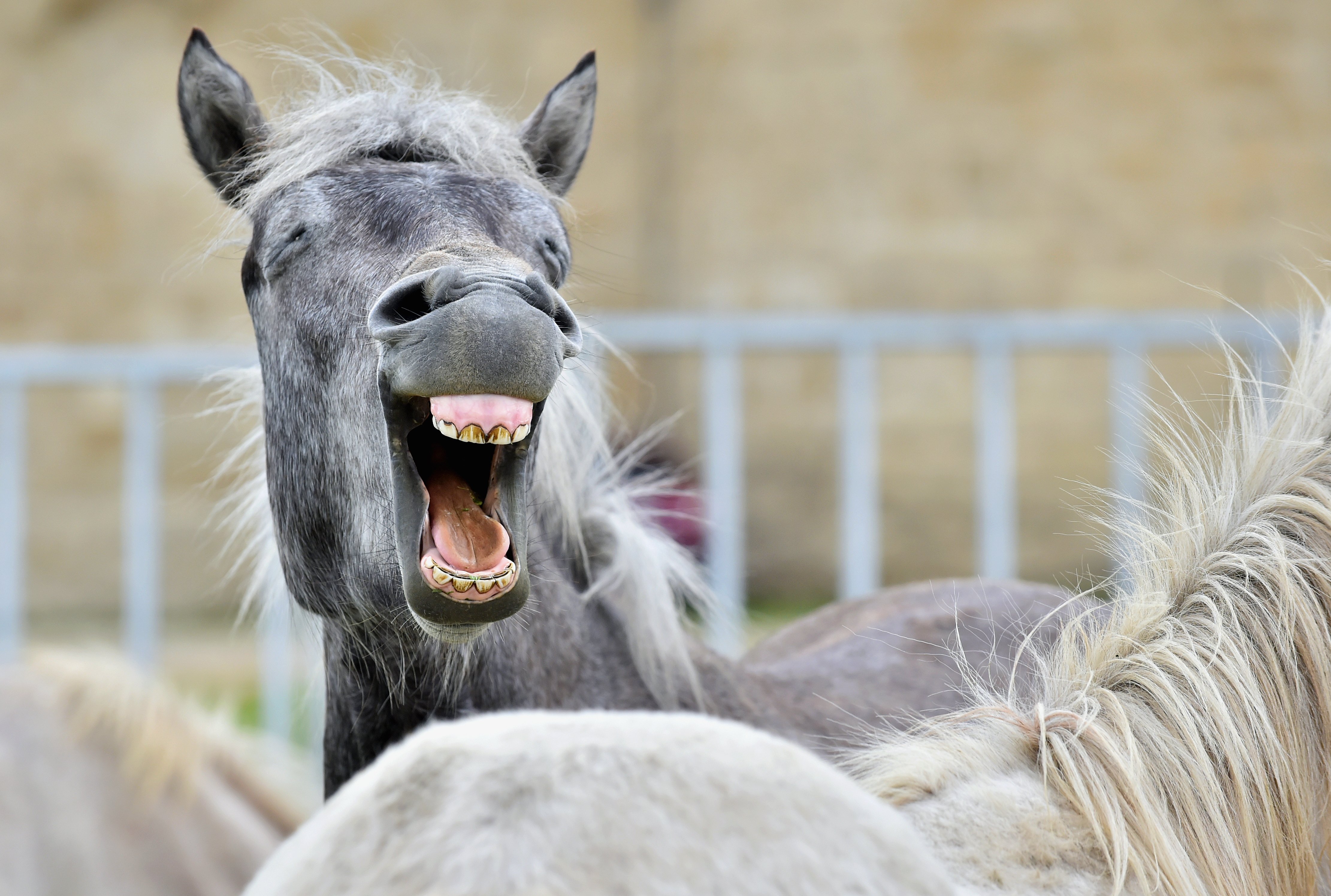
Many horse owners assume that when a horse licks objects, it's due to a mineral deficiency. However, excessive licking can be a sign of gastric ulcers.
Horses with stomach discomfort may lick a variety of surfaces, possibly in an attempt to self-soothe or stimulate saliva production, which helps buffer stomach acid.
The behavior varies widely from horse to horse—some may focus on metallic objects like stall bars or gates, while others lick wooden surfaces, buckets, or even concrete walls. In some cases, the licking becomes almost compulsive.
If your horse starts showing this behavior more frequently, especially in combination with other signs on this list, it’s worth taking a closer look at their stomach health.
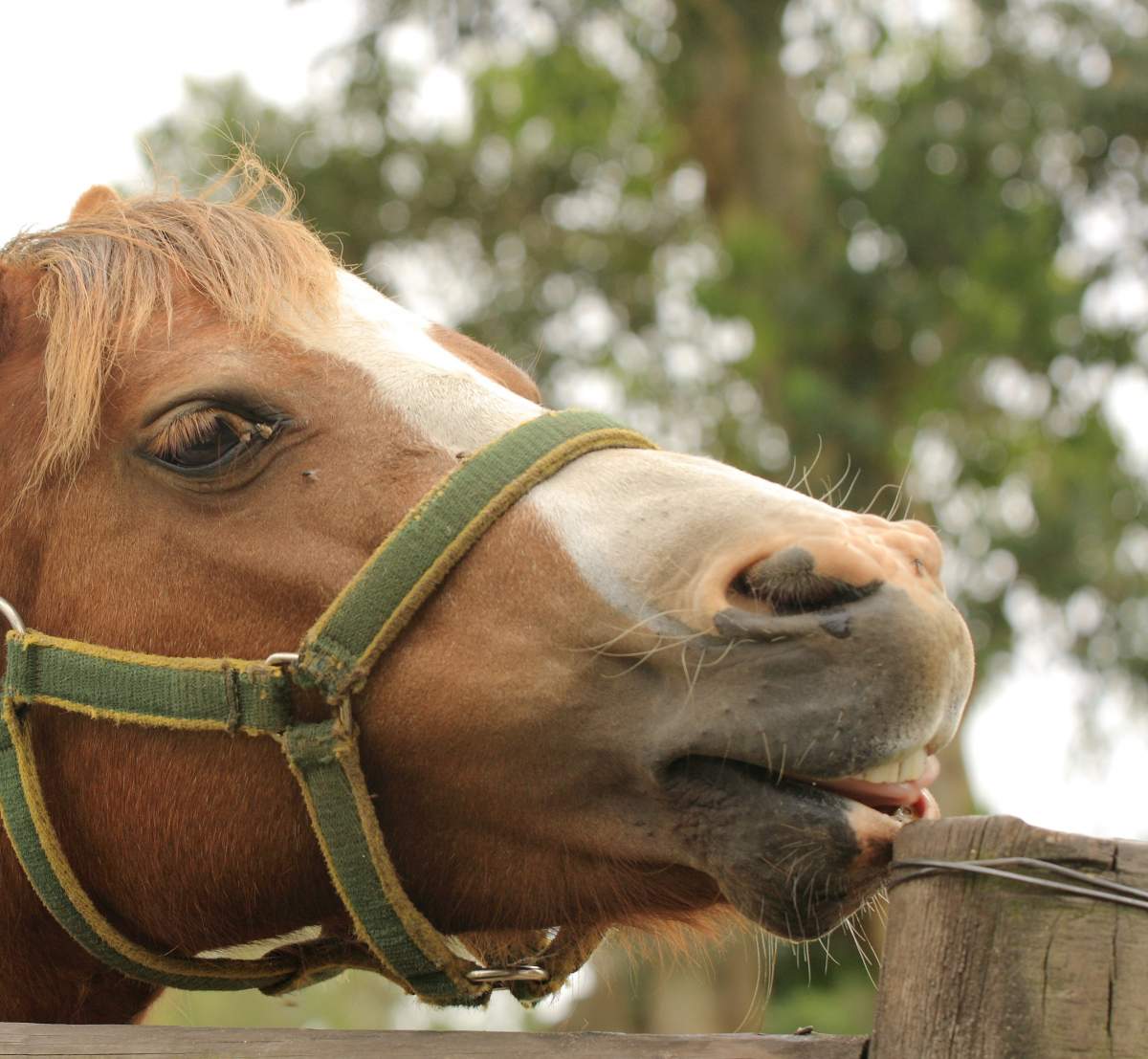
A weakened overall condition is often one of the more subtle—but telling—signs of gastric ulcers. Affected horses may appear listless, introverted, or even mildly depressed.
They tend to withdraw from their environment, showing little interest in their stable mates, their caregivers, or what’s going on around them. It’s not uncommon to see these horses standing quietly with their heads lowered or tucked into a corner, avoiding interaction and stimulation.
This shift in demeanor can be easy to overlook—especially if it develops gradually—but it often reflects a horse that isn’t feeling well. Whether due to chronic discomfort, lack of energy from reduced feed intake, or stress, these behavioral signs can be an early warning signal that something is wrong internally.
If your horse seems “off” in a way you can’t quite put your finger on, it’s worth considering whether ulcers could be part of the picture—especially in combination with other symptoms.
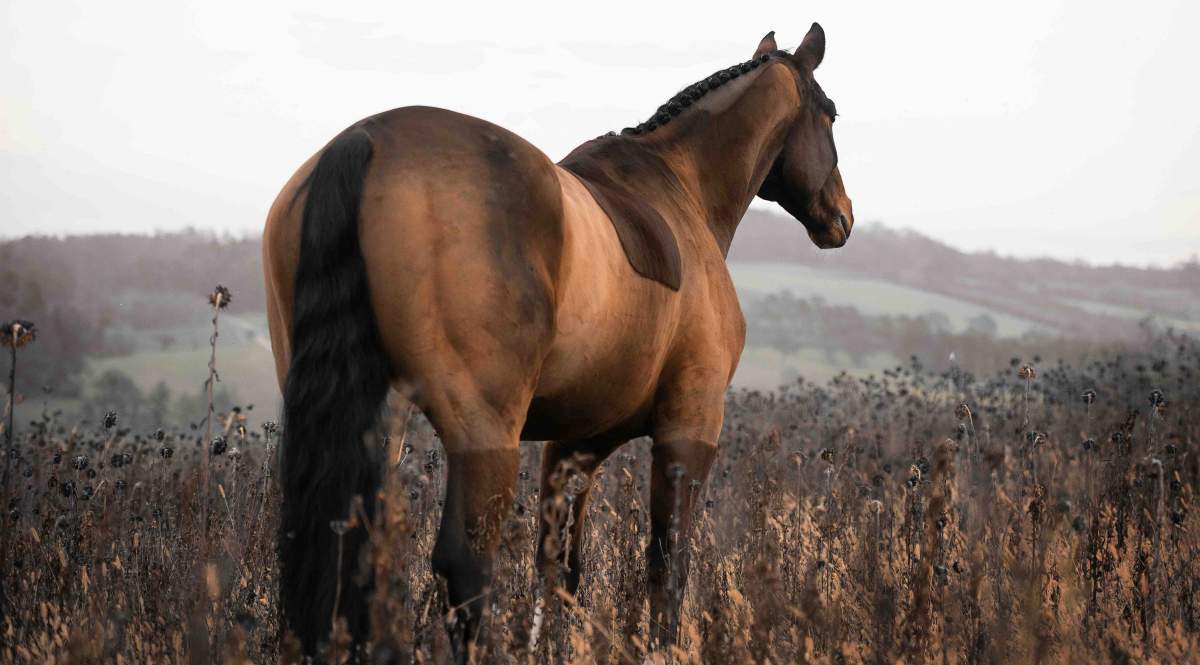
In more acute cases of gastric ulcers, a horse may show an elevated pulse and slightly increased body temperature. These signs often occur alongside mild colic symptoms due to intense stomach pain.
For reference, a healthy horse typically has a pulse between 28 and 44 beats per minute, and a normal temperature ranges from 37.5 to 38.2 °C.
If your horse’s vital signs are elevated, it’s important to consult a veterinarian immediately, as this may indicate a more serious or advanced stage of the condition that requires prompt treatment.
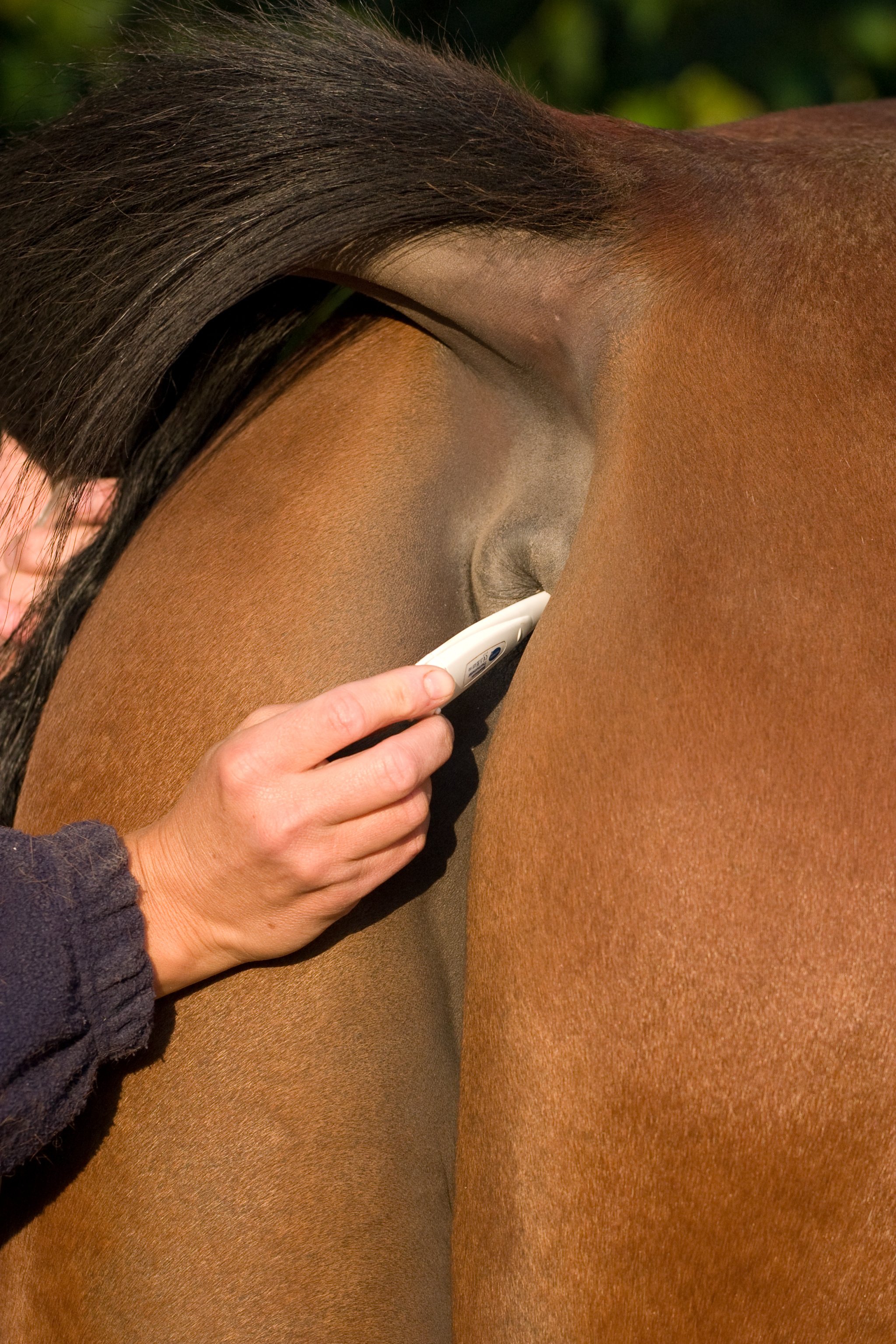
Recurring, low-grade colic can be a key sign of Equine Gastric Ulcer Syndrome (EGUS) and often points to underlying gastrointestinal discomfort.
During these episodes, horses may tuck up their belly, kick toward the abdomen, lie down and get up repeatedly, or roll briefly on the ground. These bouts are usually mild and may seem to resolve on their own—but they should never be ignored, especially if they occur repeatedly.
In many cases, no clear cause of the colic can be identified. The horse isn’t suffering from a blockage or twisted gut—it’s simply experiencing stomach pain. These so-called “idiopathic colics” (colic with no diagnosable cause) are frequently linked to gastric ulcers.
However, even mild colic episodes can escalate quickly. Ongoing pain, cramping, or rolling may lead to serious complications such as intestinal displacement, turning a seemingly harmless episode into a veterinary emergency.
That’s why no colic—no matter how mild—should ever be underestimated. Repeated, unexplained episodes are a strong warning sign that stomach ulcers or other internal issues may be present and should be investigated.
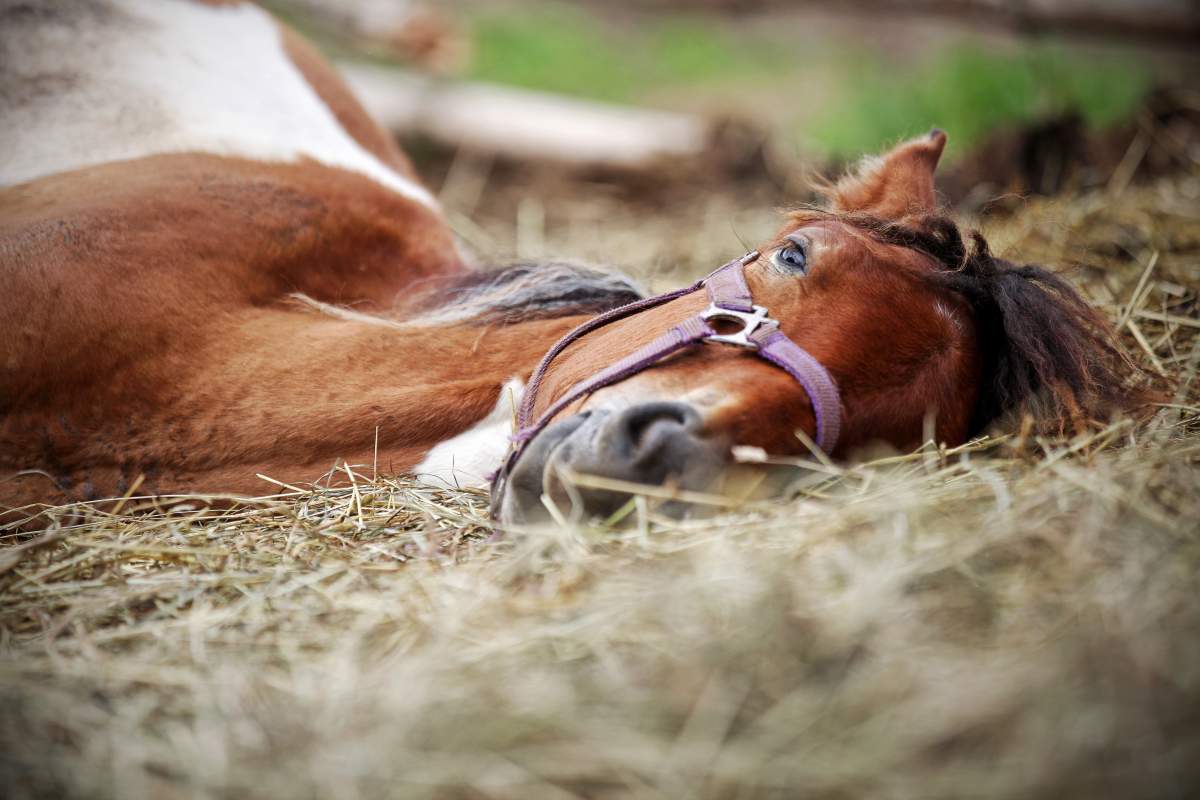
Excessive salivation can be a sign of gastric ulcers, as the horse’s body tries to buffer excess stomach acid with saliva, which has an alkaline pH.
This may occur even when the horse isn’t eating, chewing, or wearing a bit—often noticeable after concentrate feed. While more common in foals, it can also affect adult horses and shouldn’t be overlooked if it happens regularly.
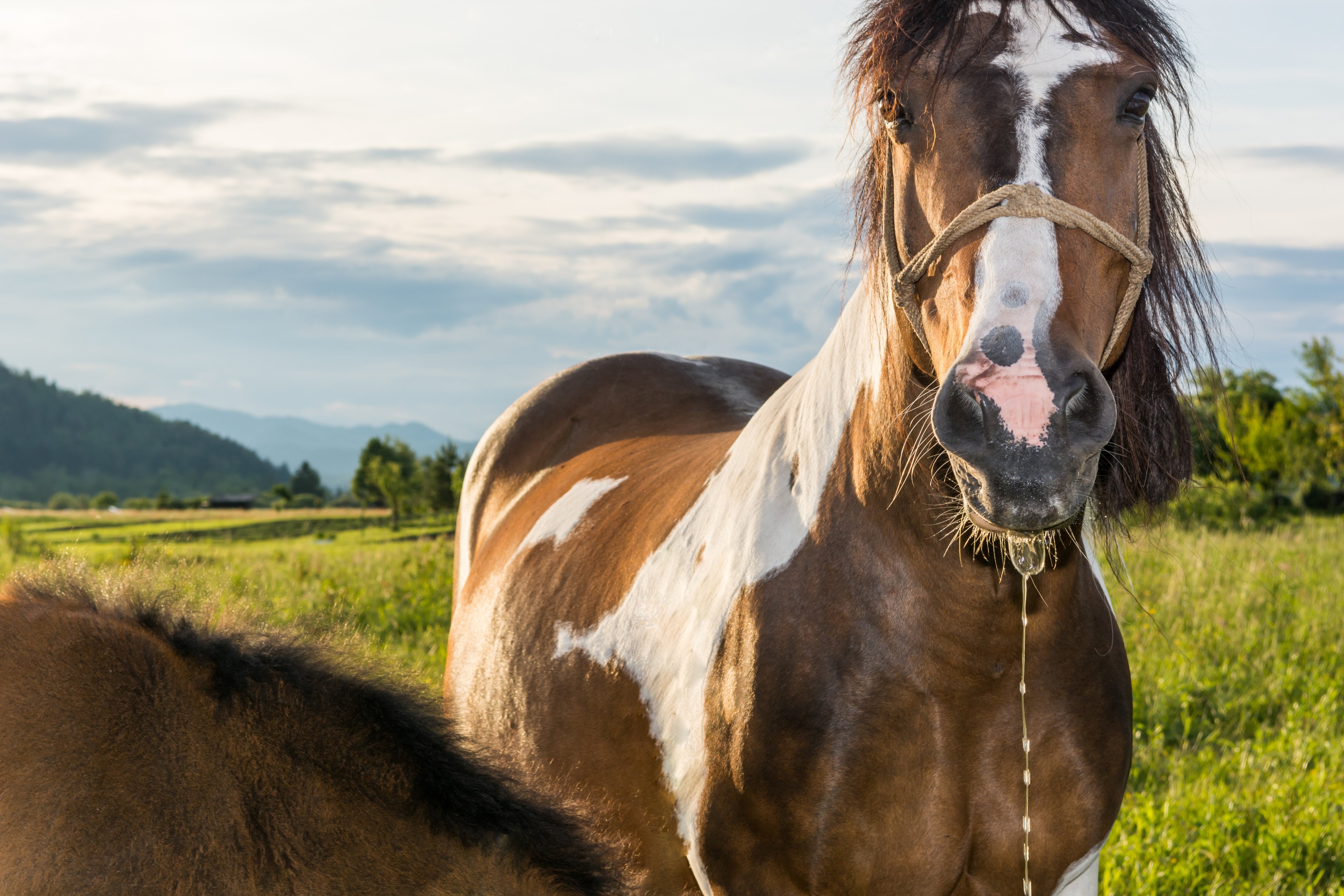
Watery stool or diarrhea is not necessarily a synonym for a gastric ulcer. However, it can have similar causes related to feeding and stress, or it may occur as a result of medical treatment for a gastric ulcer. t is always a warning sign that something is wrong in your horse’s gastrointestinal tract, and you should start investigating the cause.
Horses with gastric ulcers often experience a noticeable drop in performance. Stomach pain and reduced nutrient absorption can leave them low on energy, dull, and unmotivated.
You might notice that the horse is reluctant to trot, lacks forward drive, or simply seems lethargic. These changes are often subtle at first, which makes it all the more important to watch closely for shifts in attitude or willingness to work.
Just like humans, horses can't perform at their best when they're dealing with pain or fatigue—especially if the discomfort becomes acute.
Learn more about performance loss
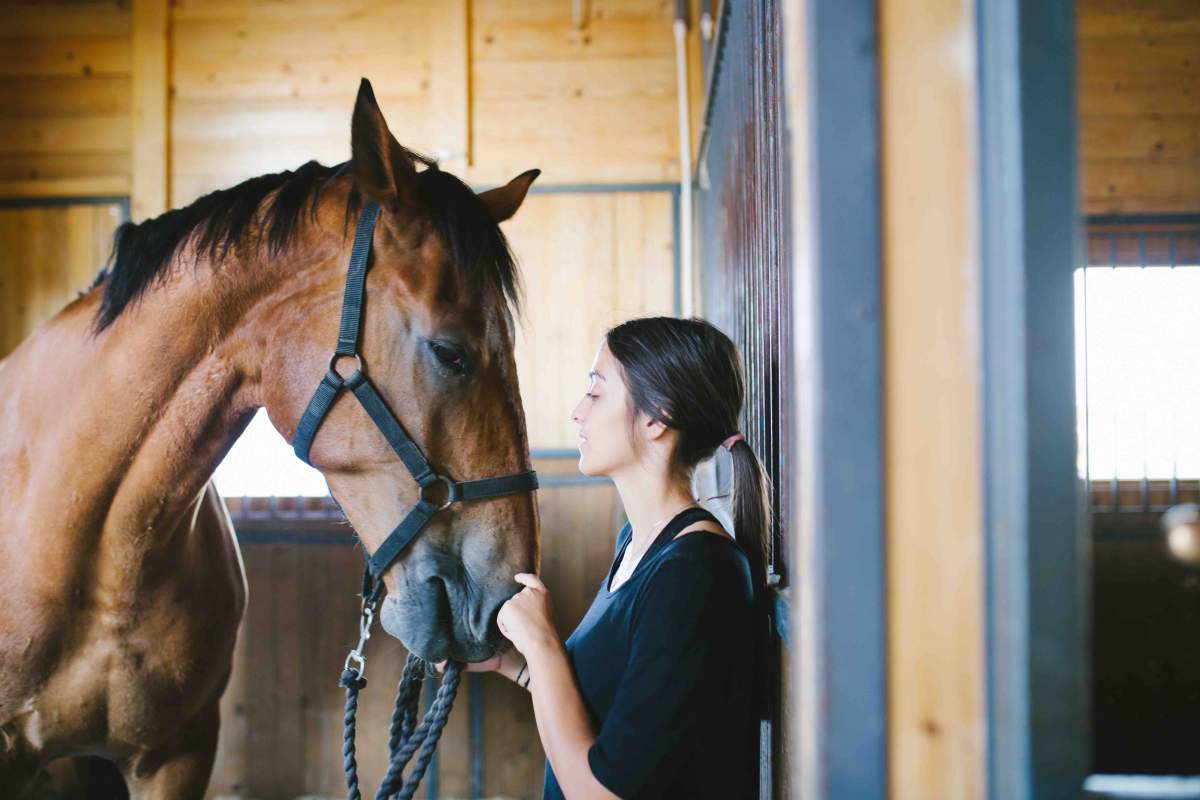
When a horse becomes difficult to ride or resistant under saddle, many riders first suspect back issues or problems with the bridle. While those are common culprits, stomach ulcers are often overlooked—yet they can cause just as much discomfort.
Ulcers can lead to significant pain during movement, especially when the horse is asked to work. In response, the horse may adopt a compensatory posture—keeping its back stiff, moving with tension, or showing signs like bucking, tightness, listlessness, or outright refusal to work.
If your horse suddenly seems unwilling or uncomfortable under saddle, it may not be about attitude—it could be a sign of gastric pain.
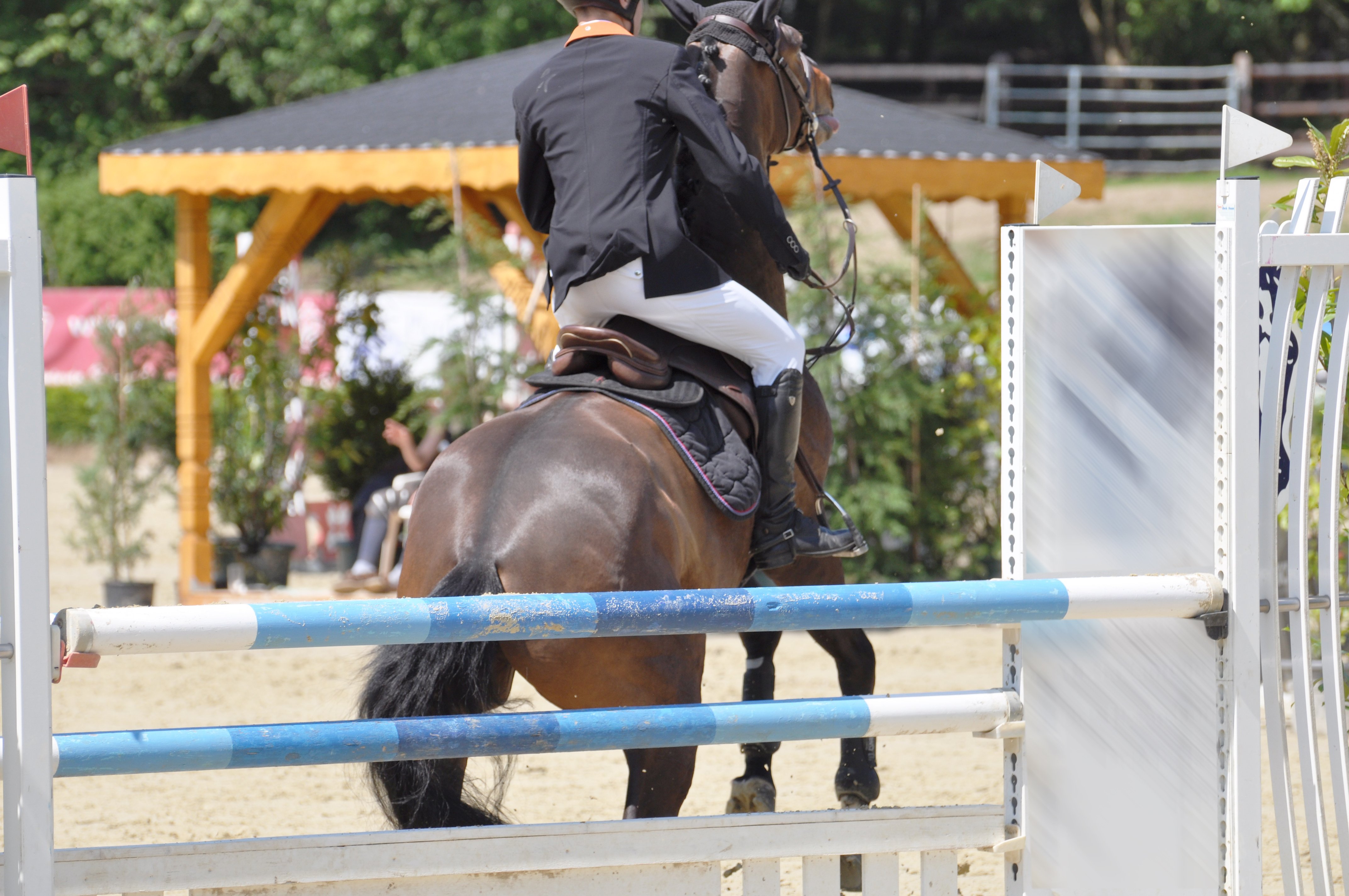
Moving downhill can cause gastric acid to splash into sensitive areas of the stomach—especially painful if ulcers are present.
Horses with gastric ulcers may become reluctant or resistant when asked to go downhill, needing strong encouragement or even refusing altogether. This hesitation can be a subtle but telling sign of stomach discomfort.
.jpeg?width=7360&name=AdobeStock_93117790%20(1).jpeg)
Weight loss and poor body condition are often the result of ongoing stomach issues—especially when reduced appetite leads to insufficient nutrient and energy intake.
Early signs might include visible ribs or a more pronounced point of the hip, as both fat and muscle mass begin to decline. These changes don’t happen overnight; they develop gradually, often going unnoticed until the horse is already in a weakened state.
While no symptom of gastric ulcers is desirable, reaching the point of noticeable weight loss is a red flag—a sign that the problem has likely been present for some time and has gone undetected.
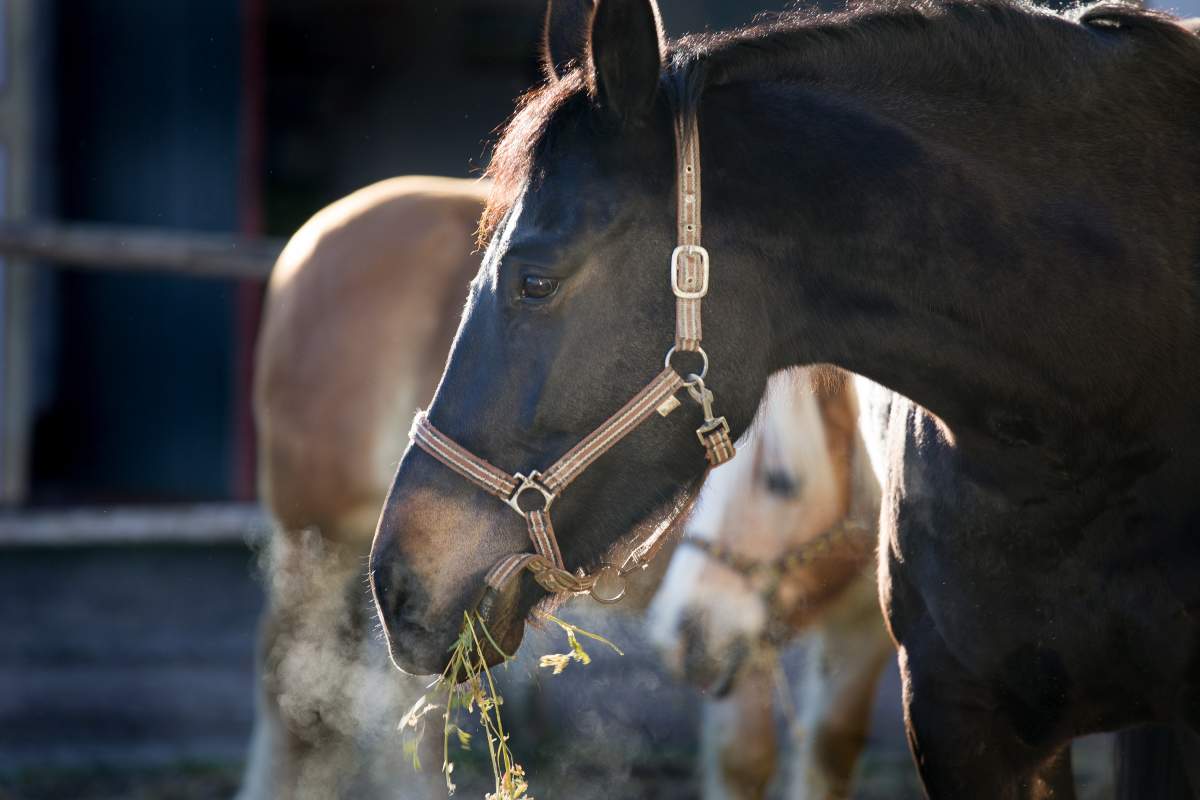
While not all horses with gastric ulcers have a dull coat, it can be a visible sign of internal imbalance—especially when paired with other symptoms like weight loss or reduced appetite.
Ulcers and their side effects can disrupt the gut microbiome, limiting the absorption of essential nutrients. As a result, the metabolism lacks what it needs to support healthy skin and coat condition. The once shiny coat may become dull, dry, or lacklustre.
That said, some horses may still appear outwardly healthy despite having ulcers—so coat condition should always be assessed in context with other symptoms.
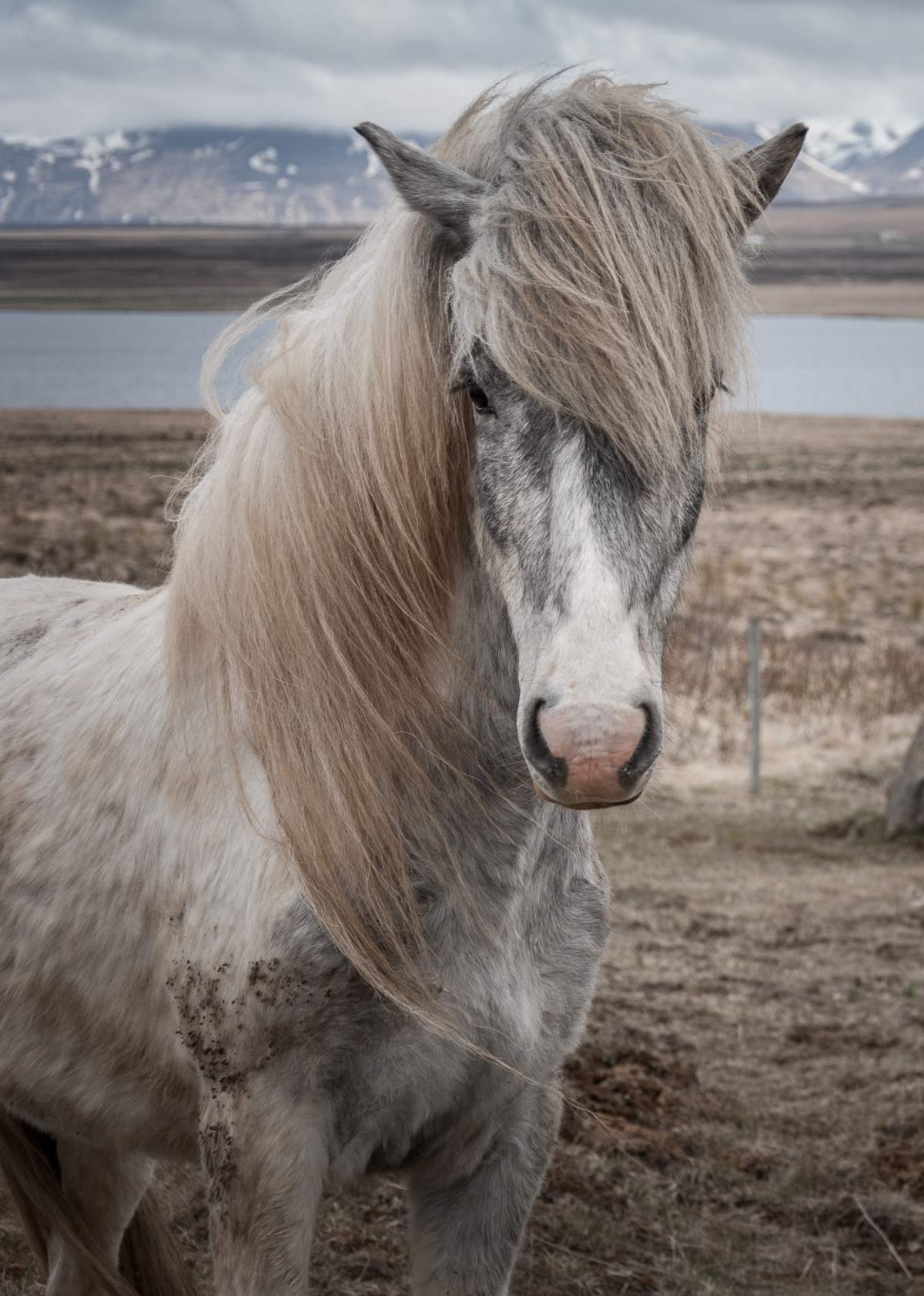
Equine 74 Gastric
Buffers the excess acid in the horse's stomach instead of blocking it.
Equine 74 Stomach Calm Relax
Supports the nervous horse stomach in stressful situations.